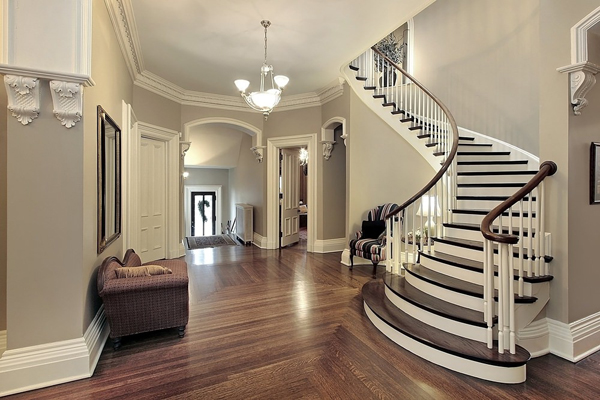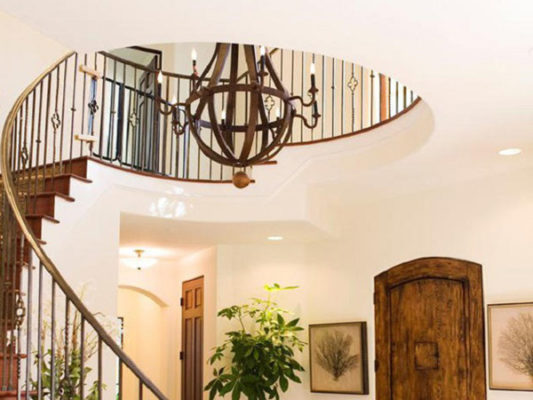People often get confused with these two terms of Interior design and Interior Decoration. However, the two render different services altogether. Interior designing refers to the total makeover of the interiors right from the scratch. Whereas, Interior decoration refers to decorating the interiors that already exists with some additional upholstery and furniture. However, both of these are a blend of art and science, guided by their own set of principles and elements. In this article the elements of designing the interiors are discussed, have a look at these below.
Space
Taking advantage of whatever you have is the basic concept that the interior designers put forth while giving design ideas to their clients. You cannot do much about the space that is available in the interiors, and so whatever you do, you have to do it within the boundaries of your interiors. Therefore, the designers should be well-equipped as how to utilize the available space so as to make the interiors look just as the clients want them to be.
Equilibrium has to be maintained while designing the interiors with furniture so that there is enough empty space in between, so as to avoid the overcrowding or sparseness on the other hand. This would entirely depend on the needs of the clients as to how they want to see a particular room and what are the objects they want to put in that specific room.
Lines
Unity, contrast, and harmony are the essential elements that the designers prioritize on while giving design ideas to their prospective clients. Lines establish an outstanding balance among these three crucial elements of designing. Lines, whether, horizontal, vertical, or dynamic help in defining the shapes and forms of the interiors. Horizontal lines are used for adorning structures like the beds, tables, and chairs. Vertical lines adorn door and windows. Horizontal lines give a sense of efficiency and stability and also make the interiors looks wider and more spacious.
Vertical lines evoke a sense of strength and freedom and can make the interiors look taller. Vertical lines are the most suitable ones at the dining area or at the entrances. Dynamic, zigzag, and curved lines look good at the staircases, having the capability to retain our gaze for a pretty long time. Designers should maintain a proper balance while incorporating these lines in the interiors as too many of these lines can cause distractions and as a result, can cause serious accidents.
Light
This is one of the most important elements pertaining to Interior design and decoration. Other elements like the color, pattern, and texture lose their significances without light, be it natural or artificial. Light sets in the ambiance of the interiors and illuminate every other element. Apart from letting the natural light come into the interiors through the doors and windows properly designed, artificial lights also should be placed in proper positions so as to set in the vibrant mood in the interiors.
Positioning the Accent light, Task light, and the Mood light in the right proportions can truly make a living space look like magic.When considering the type of light to be adorned in your interiors, it is essential to know what activities would be undertaken in that space. For example, you need some really bright lights if you are designing an office interior. On the other hand, the lights in your living room should be chosen of a much softer hue.
Color
Implementing colors in a tactful manner can change the perception of the size of the available space. Colors not only can evoke memories and emotions, but also can stimulate psychological responses in our bodies. For example, shades like blues and greens entice calmness and are suitable colors for bedrooms. Red hues can be used in kitchens as they are the epitome of appetite.
Pattern
Along with the color, the pattern also adds appeal to the interiors. Patterns are created by using various designs repeatedly and are generally used on wallpapers, fabrics, and soft furnishings. Designers use various types of patterns like motifs, stripes, organic, animal prints, geometrical, and pictorial, to name a few. Patterns add life and continue for the smooth transition to the interiors.
There are certain things that need to be considered when implementing patterns in the interiors, such as the style and size of the room. If a room is comparatively smaller and the clients want patterns in that room, then the designers implement patterns, but sparingly so as not to overcrowd the space. However, large patterns done on a large wall can create a distinct point of attraction in a room. Again, if horizontal and vertical patterns are used in a place, then they will give an illusion of heightened space.
The designers use patterns as per the styles of the room so as to keep the essence of the interiors intact. Floral and organic prints are implemented in a traditional style interior. Whereas, geometric or abstract prints can be implemented to an interior that is contemporarily styled.
Texture
Texture mainly determines how the surfaces of the interiors would look like. In fact, it defines the consistency of the surfaces by adding depth to the interiors. Categorically, there are two distinct types of textures that the designers implement into interior designing, namely, visual texture that can only be seen and actual texture that can both be seen as well as felt by touch.
Dominating texture sets the ambiance of the interiors, whereas contracting textures can be used to keep the monotonous factors at bay. Anything starting from pillow covers to window drapes to bed sheets etc. is designed with various textures that suit the styles and need of the interiors. Apart from including the above-mentioned elements, the designers never compromise with the fun elements as well. Dedicating a room filled with interesting elements is one of the principles of interior designing. Vibrant colors, zigzag patterns are used in at least one room or at least at some portions of the wall to keep the essence of interior designing intact. A separate room also needs to be dedicated exclusively for the kids of the house. If the interior designing needs to be done for an office, for example, the cafeteria can be filled with fun elements and so on and so forth.






